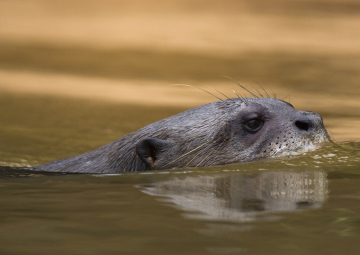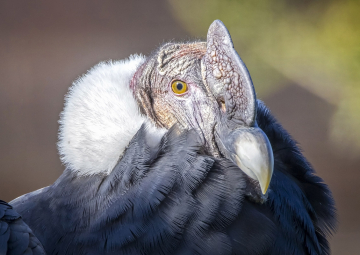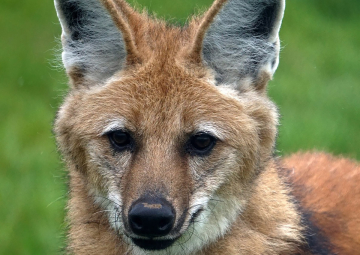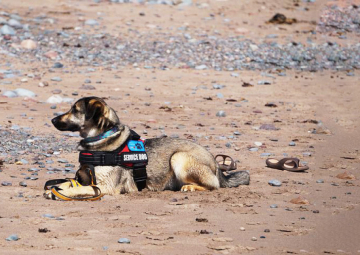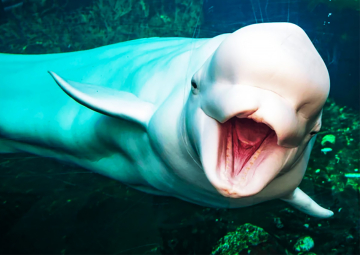Marine mammals
Aggression: Exploring Causes and Possible Reduction Techniques
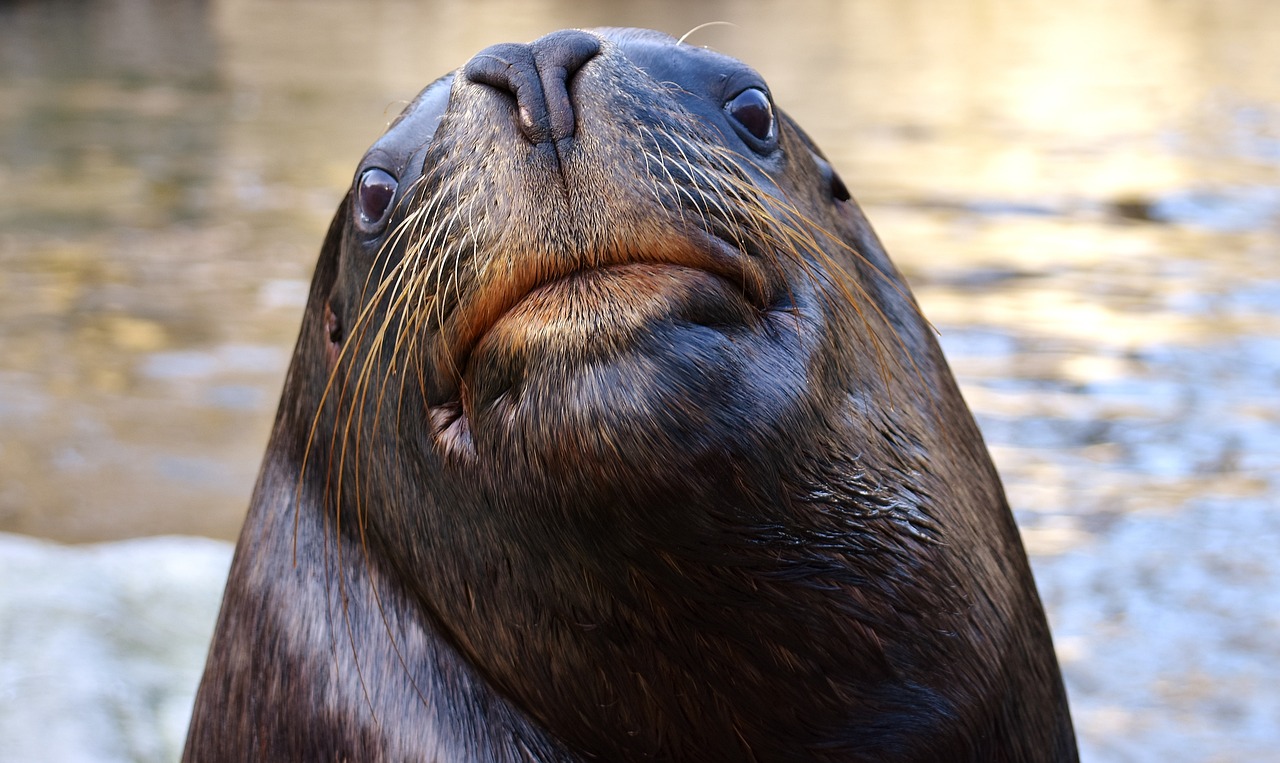
We can confidently state that nearly everyone who has worked with or observed animals for a significant amount of time has witnessed some form of aggressive behavior.
While not easily identifiable, there is empirical evidence suggesting that aggression can be predicted, controlled, and reduced. However, despite the abundance of literature on the topic, little has focused on marine mammals.
On this occasion, we draw inspiration from the article "Aggression: Exploring Causes and Possible Reduction Techniques" by professionals Ted N. Turner and Chuck Tompkins, who presented this topic at the annual IMATA conference in Amsterdam in 1989.
Aggression control is an important subject for us as trainers. Not only do our animals risk injury, but we also face that risk, especially when attempting intervention.
Often, during an intervention, aggression can even escalate. Intervening during aggression generally only serves to increase its frequency or intensity through accidental reinforcement. Trainers or caretakers often allow animals to "work out their differences." However, there is growing evidence suggesting that aggression as a cathartic or liberating tool only serves to intensify problems and increase the frequency of fights. So how do we attempt to control or reduce aggression without making it worse? First, we must understand the causes of aggression.

As ethologist Konrad Lorenz stated, "aggression is part of an animal's normal behavioral repertoire, enabling it to cope with its environment." A synopsis of the physiological process shows that external stimuli travel to the brain through the peripheral nervous system, where stimulation of the hypothalamus triggers activation of the autonomic nervous system. This system stimulates the endocrine glands, which in turn produce adrenaline. This process prepares the body for aggression or flight (activation syndrome), and at this point, certain observable behaviors become apparent. A careful observer can recognize these precursors as "premonitory" aggressive behaviors and take measures to avoid the inevitable outcome. Marine mammal species have their own precursor behaviors, many of which we will identify later. For now, let's simply say that the causes of aggression are influenced by physiology and include hormonal factors, endocrine involvement, and biochemical fluctuations. From this point on, we will focus on the external factors that dictate aggressive behavior.
Much of what an animal learns is governed by the social group. As the organism develops, punishments and reinforcers derived from the group or the environment shape what is learned and subsequently exhibited by the animal. It has been found that many learned and social aggressive responses come from three main sources: the mother, competition among littermates, and "play" with prey (Wolgin, 1982). From this learning situation, a broader repertoire of predatory behaviors develops and is rehearsed. The images we see in documentaries of orcas support this theory regarding marine mammals. We often see adults incapacitating prey and allowing young individuals the opportunity to imitate and rehearse aggressive and predatory responses. Much of this behavior is attributed to observational learning.
Albert Bandura, the social psychologist, was widely recognized for his theory that aggression can be learned or influenced by observing others. Much of what we witness in our training situations supports this idea. An aggressive environment provides animals with the opportunity to learn and rehearse aggressive behaviors, increasing the likelihood of aggression manifesting.
We observe this process in the social dynamics of bottlenose dolphins. According to Johnson and Norris (1986), observations suggest that the social dynamics of dolphins are based on a dominance hierarchy in which an alpha male dictates social status and reproductive access through threatening behaviors. This dominant animal initially controls the group by aggressing towards members who have not yet learned certain social aspects. Over time, through punitive consequences or punishment, aggressive behavior transforms into a precursor signal of aggression, such as head movements, jaw snaps, tail slaps or other displays of threat, and becomes the sole necessary signal to control the group. This learning process stabilizes, and only periodic fights occur. However, if a new member is added or removed, the social dynamics change, increasing the frequency of threat displays and fights until the new member finds their subordinate position or the dominant animal is replaced (Goodall, 1986). It is important to note that many other factors influence the evolution of social aggression.

Now let's examine a training scenario that can further clarify an example of social aggression. A group of sea lions has recently been relocated to their facility from two different zoos. Initially, everything is calm, and the animals appear to be highly compatible. However, after three days, fights start to occur more frequently. Over time, the fights decrease, and the area becomes stable, with only occasional bursts of aggression. This situation is normal and usually occurs for the following reasons:
- Establishing the alpha position.
- Establishing the main territory.
- Acquiring sleeping space.
- Acquiring mating rights.
- Obtaining food, and as training progresses, gaining attention (reinforcement from trainers).

Now let's take it a step further and discover that two of these sea lions have started performing displays.
While the two sea lions are in session, the dominant animal begins to displace the subordinate animal by roaring and moving towards it. The subordinate animal runs away, while the dominant animal stays and continues with the display.
Upon analyzing the situation, we find that the dominant animal receives positive reinforcement by being able to continue and negative reinforcement by displacing the subordinate animal. At the same time, the subordinate animal receives negative reinforcement by escaping potential aggression. As we know, reinforcement, by definition (whether positive or negative), tends to increase the behavior that preceded it. Consequently, the same occurs in the next display.
This next situation represents a combination of social hierarchy and accidental reinforcement.
A trainer begins to feed a young dolphin while simultaneously feeding an adult dolphin. While the trainer reinforces the young animal, occasionally a fish slips and falls into the water. The adult quickly turns its head and eats the fish. In the following sessions, the adult starts stealing the young dolphin's food and initiates some precursors towards the younger animal. In the next week, the adult will be chasing the young dolphin and quickly turning attention towards the trainer to be reinforced.

If at this point we reinforce this behavior, we will be reinforcing aggression or an indication of it. Both scenarios are examples of social aggression with accidental reinforcement that contributes to the problem. By taking these precautions, both situations could have been avoided:
- Look for warning signs (precursors).
- Redirect attention (stimulus redirection to redirect the animal's energy).
- Reinforce any non-aggressive behavior (Differential Reinforcement of Other Behavior - DRO and Differential Reinforcement of Incompatible Behavior - DRI).
- Feed with more care.
The introduction of new animals into the group, changes in hierarchy, occasional fluctuations during certain times of the year, sexual activity, stress for various reasons, careless training, accidental reinforcement, and observational learning are some of the main causes of aggression.
During the use of partial reinforcement programs, including Fixed Ratio (FR) and Variable Ratio (VR) schedules (if you have any doubts about these acronyms, you can learn more about reinforcement schedules in our article "What Leads an Animal to Perform a Behavior?"), an intermediate behavior known as program-induced behavior can develop (Houston, 1986). This can also manifest as aggression and is known as program-induced aggression (Staddon, 1977). Program-induced aggression can be seen as an accumulation of frustration caused by the use of a partial reinforcement schedule, where only some of the responses are reinforced. The problem is further complicated when reinforcement occurs during the presence of this conditioned emotional frustration. The animal quickly learns that "being frustrated" is part of the contingency for reinforcement (Houston, 1986), and accidental shaping of aggression begins again.
For example, a dolphin is asked to perform a jump. The response is incorrect and not reinforced. The signal is given again, and once again, the response is incorrect. The signal is given for the third time, and immediately the animal loses control, starts swimming fast, and vocalizes energetically...
Another example could be: Two orcas are asked to wave their fins. One does it correctly, and the other does not. The correct orca receives reinforcement, while the other animal does not. They are both asked to do it again. Once again, the first orca responds correctly, but the second one does not. The signal is repeated for them to do it again, and this time, the second orca chases the first one to aggress and then ignores the trainer.
In the previous scenarios, two types of program-induced behavior are observed: frustration/avoidance and aggression/displacement. As you can see, many principles are at play to control subsequent responses, and learning, for better or worse, continues to take place.
The first example could be managed by "changing the focus" and using a procedure known as Differential Reinforcement of Other Behavior (DRO) (Kazdin, 1984). Continuously giving signals to the animal without reinforcement and thinking that it is "playing with us or not doing it because it doesn't want to" is a mistake that can lead to aggression or, at the very least, a negative learning history. In human behavior modification programs, DRO is used very effectively. If you have any doubts, you can learn more about differential reinforcement in our article "What Leads an Animal to Perform a Behavior?".
The following points generally apply to all species and are considered "universal rules" of aggression:
1. Animals that have the opportunity to aggress will do so more frequently (Johnson, 1972).
2. The use of punishment or aversive techniques will cause aggression (Kazdin, 1984).
3. Aggression can be shaped through accidental reinforcement (Skinner, 1963).
4. Reinforcement (also deliberately) can shape aggression. For example:
- Animals may initially respond more favorably to a consistent environment (radical changes should be slow and positive).
- An animal that is deprived of food or hungry will aggress more easily (Staddon, 1977).
5. Most animals have some degree of aggressive repertoire (Konrad Lorenz).
These principles generally apply to all species.
What is DRI?
One of the most effective ways to control aggression is through the use of Differential Reinforcement of Incompatible Behavior (DRI) (Kazdin, 1984). This is a proactive method for addressing aggressive behaviors. DRI reinforces behaviors that directly compete with aggressive behaviors or, in other words, behaviors that are incompatible with the unwanted ones.
The effect is to increase the frequency of the incompatible behavior (e.g., attention or a control position) and decrease the frequency of the desired response (e.g., biting or growling). For example, if a sea lion starts roaring and attempts to displace another, instead of allowing the animals to fight, the trainer asks the animal to lie down. The animal does so, receives reinforcement, and the presentation continues without incidents.
Ideally, the trainer may have an inclination that this may occur and can recognize the nuances of behavior that lead to roaring. If at this point a signal for an incompatible behavior is given, there is a greater likelihood of preventing aggression. In other words, early recognition and the application of DRI are the most effective means of controlling aggression. Once animals begin the aggression process, it becomes more challenging to redirect their attention. Early recognition is the best defense. DRI is closely related to the Training of Alternative Responses (Kazdin, 1984).

As mentioned earlier, understanding what happens right before aggression and acting at that moment is where injuries can be prevented. Here is a list of warning signs or aggressive precursors that may indicate imminent aggression. Animals, like people, often give many warning signs before becoming violent. These precursors include:
Aggressive behaviors in cetaceans:
1. Head movement up and down.
- Unusual vocalizations.
- Fluke or flipper slaps.
- Short or explosive breaths.
- Open mouth.
- Jaw pops.
- Ignoring trainer cues.
- Splashing (when not asked).
- Slow and deliberate movements (predatory topography).
- Food spitting.
- "Mouthing" or exploring with the mouth.
- Avoiding or blocking other animals.
- Submerging below the water surface.
- Bubble blowing.
- Stiff back or body.
- Sudden movements.
- Wide-open eyes.
- Any abnormal behavior (e.g., sliding out of the water).
Aggressive behaviors in pinnipeds:
1. Retracted neck/wide-open eyes.
- Avoidance.
- Barking or roaring.
- Head movement from side to side.
- Blocking other animals.
- Prolonged eye contact.
- "Mouthing" or exploring with the mouth.
- Charging.
- Unusual vocalizations (e.g., whistling in walruses).
- Sudden change in expression.
- Cautiousness or keeping distance.
- Any abnormal behavior.
By recognizing these warning signs and taking appropriate action, trainers and handlers can intervene to prevent aggressive incidents and promote a safer environment for both animals and humans.
At this point, it is expected that most of us have learned enough from the literature to understand that punishment or forced adverse control will result in a variety of negative manifestations, including aggression (Staddon, 1977; Kazdin, 1984; Ferster and Culbertson, 1982; Houston, 1986). Although it may immediately reduce or eliminate the above-mentioned list of undesired behaviors or responses, animals will soon learn to hide these warning signs before aggressing, thus avoiding punishment. This is an extremely dangerous situation, as losing the "warning signs" is inviting disaster. It also destroys the "trust" you have developed with your animals.
Remember that attempts of aggression or the numerous incorrect responses from the animal should not be taken personally against the trainer. Animals, like us, have good and bad days, and forced control or punishment will only increase the number of bad days. Nothing can replace the benefits of using patience, tolerance, and positive interaction with your animals.
Knowing the precursors is a starting point for controlling dangerous situations, but experience has taught us that there are contingencies and moments that increase the risk of aggression. Knowing these situations will allow us to avoid them as best as possible:
- Inadequate separations or gating.
- Numerous incorrect responses to the SD (discriminative stimulus).
- Feeding only one animal in a group.
- Animals not receiving reinforcement after several attempts.
- Change in reinforcement contingencies.
- Low intensity, criteria, or motivation observed in training situations.
- Attempting to interrupt courtship or sexual activity.
- Social aggression that "spills over" into the training session.
- Placing the animal in a vulnerable position for attack by others.
- Pressuring animals too much, causing frustration.
- Medical treatment that may cause discomfort.
- Using behavioral extinction (extinction burst, which we will discuss in future articles).
- Scared, sick, or injured animals...
How do we reduce or eliminate aggression?
- Understand the situations where aggression can usually occur.
- Understand the precursors, the warning signs that can predict aggression.
- DRI/DRO/DRL: Training alternative responses to provide an alternative to aggression. Use desensitization.
- End the session before it occurs. Do not attempt to "work through it." "Change focus" or withdraw.
- Keep records so trainers can learn from their own mistakes.
In conclusion, we can no longer assume that aggression spontaneously arises out of nowhere, nor can we expect it to disappear on its own. But at Wezooit, we are confident that with perseverance, knowledge of the correct training techniques, and loads of patience, complicated situations such as aggression among our animals can be resolved or mitigated.
And remember, if it's possible... Wezooit!












